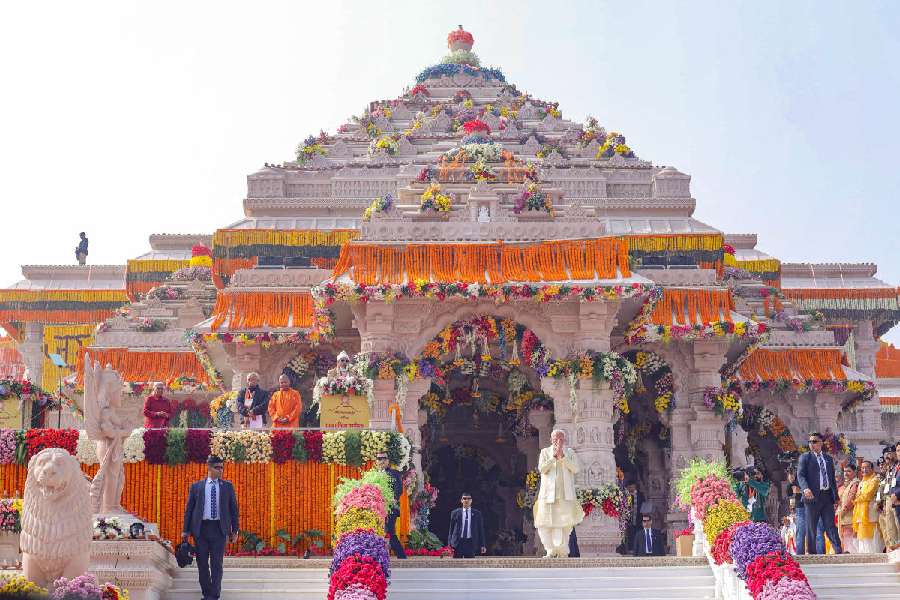The Ayodhya Ram temple, which has been drawing devotees in huge numbers, is designed to withstand the biggest earthquake that occurs once in 2,500 years.
The CSIR-Central Building Research Institute (CSIR-CBRI) - Roorkee conducted a series of scientific studies of the Ayodhya site, including geophysical characterisation, geotechnical analysis, foundation design vetting, and 3D structural analysis and design.
"The scientific study was done to ensure the structural safety of the temple for the Maximum Considered Earthquake, equivalent to a 2,500-year return period," Debdutta Ghosh, a senior scientist at CSIR-CBRI, told PTI.
Ghosh and Manojit Samanta -- coordinators of the Centre of Excellence for Conservation of Heritage Structures at CSIR-CBRI -- led the teams in reviewing the foundation design and monitoring, conducting 3D structural analysis and design of the Ram mandir.
The pair was guided by CSIR-CBRI Director Pradeep Kumar Ramancharla and his predecessor N Gopalakrishnan.
Ghosh said the geophysical characterisation process involved a Multi-Channel Analysis of Surface Waves (MASW) to estimate primary wave velocity, along with electrical resistance tomography to identify anomalies, water saturation zones and water tables.
These findings served as crucial inputs for a site-specific response for underground investigations and estimation of seismic design parameters, he said.
The CSIR-CBRI also vetted soil investigation schemes, foundation design parameters, excavation schemes and recommendations for foundation and structure monitoring.
Ghosh said the structural design was recommended after simulating more than 50 computer models and analysing those under different loading conditions for its optimal performance, architectural appeal and safety.
The entire superstructure has been constructed using Bansi Paharpur sandstone, embodying a dry jointed structure with no steel reinforcement, designed for a lifespan of 1,000 years, he said.
The superstructure material -- Bansi Paharpur sandstone -- has been tested at the Centre to evaluate the engineering properties that was used as input for structural analysis.
Specialised brick with compressive strength of more than 20 MPa (mega pascals), or approximately 2,900 pounds per square inch (psi), at 28 days of curing under standard conditions, has been used in the structures, Ghosh said.
Except for the headline, this story has not been edited by The Telegraph Online staff and has been published from a syndicated feed.











